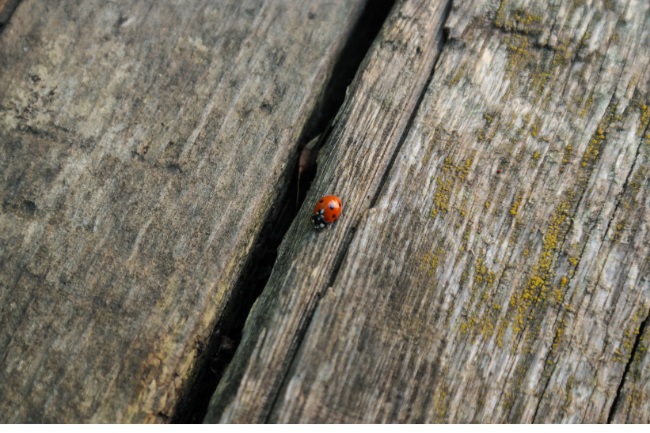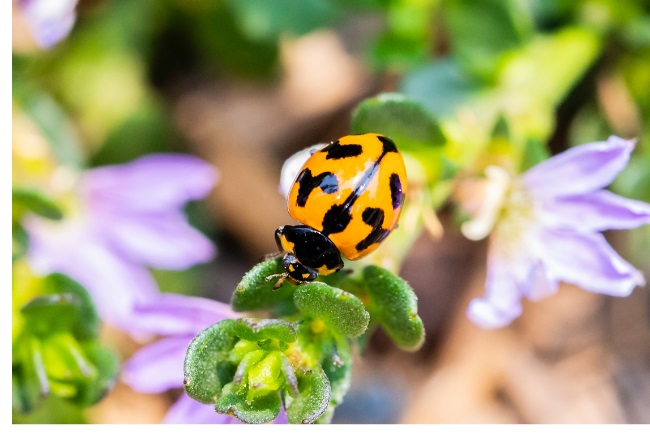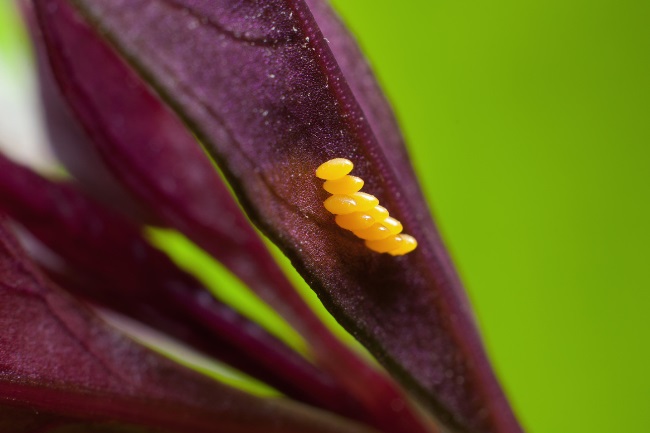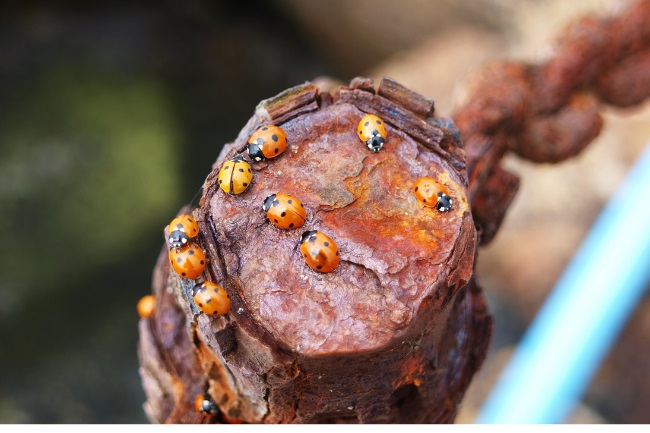There are many ways to attract ladybugs into your garden. The key things are to provide a tempting bed and breakfast, by giving them plenty of tasty snacks, such as aphids, and places to sleep away the winter, such as a comfy log pile.
There are lots of reasons why you might want to attract ladybirds. Firstly, these charismatic little insects have long been considered a key ally in the fight against many destructive pests. Aphids, whiteflies, and scale bugs may well quake in their boots as that large red dome comes into view.
Contents
If you’re a keen gardener, be it of decorative flowers or healthy fruits and vegetables, ladybugs can be truly indispensable in saving yourself from a frail and wilted crop. Beyond the practical, you might also just enjoy seeing the little critters around, ladybugs being one of the few insects that people commonly have affection for. But, the key question is how to attract the ladybugs in the first place?
| Technique | Description |
|---|---|
| Provide Shelter | Offer ladybugs sheltered areas such as dense vegetation or rocks |
| Avoid Pesticides | Avoid using chemical pesticides, which can harm ladybugs |
| Provide Water Source | Place a shallow dish with water to provide drinking opportunities for ladybugs |
| Plant Diversity | Create a diverse garden with a variety of flowers and plants to attract different insect prey for ladybugs |
| Avoid Chemical Fertilizers | Minimize the use of chemical fertilizers, which can repel ladybugs |
To get the predator invite in the prey

It may sound a little counter-intuitive, but ladybugs aren’t going to hang out anywhere where there’s nothing to eat. So if you want the ladybug, you’re going to have to have the aphids and whiteflies too. However, this doesn’t mean abandoning your plot of land completely to pests and creating a post-apocalyptic landscape of holey leaves and drooping stems. Though we may not always see it, every part of our environment is part of a complex ecosystem.
By removing one piece, we quickly find the balance shifts in unexpected and sometimes unwelcome ways. On the other hand, a healthy system tends to keep everything relatively in check and well regulated. Yes, you’ll have a few aphids, but you’ll also have a lot of ladybugs, and together they’ll make sure nothing gets too out of hand.
Attracting pests isn’t something we usually think of doing, but the simplest way to achieve this is to plant species they like to munch on. This doesn’t necessarily mean sacrificing your prized cabbages. One creative way to attract pests without breaking your heart is to try sacrificial planting.
This is where you plant things that pests find particularly appetising, close by plants you don’t want to be eaten. This way, they can be dining out on nasturtiums and marigolds while your broccoli goes about its business. And once the pests move in, the predators should too, preventing the infestation from getting out of control.
Also read: Do Ladybugs Eat Plants? (Explained)
Planting for your guests
As well as planting things to attract the pest species you can also select species that are directly appealing to the ladybugs themselves. The best way to make sure your ladybugs are completely happy is to provide something for every part of their lifecycle. The very first stage of a ladybug is an egg. These eggs are mostly laid directly onto vegetation. In general, the adult female will aim for somewhere near plenty of tasty pests; however, they also have particular plants they like to use. The stinging nettle isn’t a favourite for us humans, though historically, we’ve used it for all kinds of purposes, from medicinal to culinary.
| Plant Name | Description |
|---|---|
| Dill | Produces delicate flowers that attract ladybugs |
| Fennel | Its clusters of tiny flowers are highly attractive to ladybugs |
| Yarrow | Blooms with flat-topped clusters of flowers that ladybugs love |
| Calendula | Bright orange or yellow flowers that attract ladybugs |
| Sweet Alyssum | Produces small, fragrant flowers that are attractive to ladybugs |
Wildlife, however, seems to get a real boost from these plants, and ladybugs love them for laying their eggs on. This may be because they are mostly protected from browsing animals, by the stinging nettle’s painful nature, which protects eggs from being munched up in the process. Additionally, there’s often plenty of aphids and other insects available for the larvae when they hatch.

Beyond a safe place to lay their eggs, ladybugs are actually attracted to certain flowers. Yellow and white flowers are their preferred choice, which is true of many beetles. Wide flat flowerheads are also more popular, probably because they are easy to land on and take off from. Sunflowers, cosmos, and yarrow are just a few which are popular with this little bug. While they aren’t visiting the flowers specifically to eat the nectar or pollen, their primary target is to hunt. Yet, they will help themselves now and then as a supplement to their usual diet.
Along with flowers, ladybugs are attracted by the smell of many herbs such as dill, mint, and parsley. Like sacrificial planting, companion planting of species that the ladybugs like can be a great way to call them into your vegetable beds to protect your cauliflowers and cabbages.
Companion plants grow well alongside certain other species by using up different resources or giving out things their partners need.

Beyond the plants that ladybugs like to lay eggs on or hunt within, they have one final requirement. During the winter months, ladybugs will be looking for somewhere sheltered and warm to wait out the cold until the all-you-can-eat buffet is back up and running. Often they will favour hollow plant stems as a safe place to hide, the tight spaces preventing larger predatory species from entering. Plants that remain stiff and upright once they have died are ideal for this, such as teasel, hogweed, and sunflowers.
The important thing is not to cut back these dead stems until the spring warmth begins to provide a new start for the hibernating insects. If cutting can’t be avoided, you can always place cut stems somewhere dry and out of the way, ensuring they will not become waterlogged and rot.
Also read: How do Ladybugs Reproduce? (From Egg, Larvae to Pupa)
Leave a little mess
Mess is in the eye of the beholder. As humans, we are often inclined to seek order and symmetry in all we create and manage, but nature thrives in niches, and niches are created within disorder. Piles of logs, drifts of leaves, thick tussocky grasses, or flowers tumbling over one another, are all highly attractive to wildlife. If such a disorganised setting would significantly increase your blood pressure, why not try to find a compromise.
Cutting paths through long grass can make it look more planned and less uncared for. If you can’t leave branches where they fall, why not dedicate an area of your garden as a wildlife patch and pile them up there. If too many dead stems in the winter look chaotic, then how about selecting those which look more sculptural and leave a few dotted around.

Man-made bug hotels have become something of a fashionable item; however, it’s worth considering that things like this may come with their own environmental cost, from mining the metals for the screws to the cutting down of the trees for the wooden cases.
A natural bug-hotel, in the form of plant materials that have been grown then and there, have a much more significant impact. However, where there are no opportunities to do this, a shop brought bug hotel still provides a beautiful shelter for many insects. Even better, why not make your own from household scraps and gathered natural materials?
Ladybugs will enjoy anything which creates nice crevices for them to shuffle into, from bamboo canes, bits of bark, to bundles of twigs.
Put away the poison
In many areas of our lives, we have become over-reliant on pesticides, from spraying off weeds on the pavements to putting down slug pellets in our vegetable beds. However, most of these poisons aren’t targeted at a particular species, at most being aimed at a specific group such as mollusks. Though you may be attempting to get rid of annoying pests, you could find you’ve killed off their preditors as well. And next time they return, there won’t be any friendly ladybugs to take care of them for you.
Keep out the competition.
There are now many places you can buy live ladybugs to release them into a specific area or indoor spaces like polytunnels. Many people mistakenly think that this will benefit wild ladybugs by boosting their numbers; however, they can cause more harm than good. Firstly the species of ladybug being released might not be native to the area you are introducing them to; they might be from a completely different country or even just not be found locally.
This can then create an imbalance in the local ladybug community by increasing the competition for food. Additionally, ladybugs are also often cannibalistic, so if you release adults when there are many ladybug eggs or larvae around, these might fall prey to your more mature specimens. Even if you don’t think you have any ladybugs, you’d be surprised how many might be tucked away out of sight.
So the good news is that there is plenty you can do to attract ladybugs into your life. Even better, many of these things will benefit a host of other insects and wildlife as well. And though you might be more excited to see a ladybug than a hoverfly in time, you’ll see that a garden full of life is so much more varied and exciting than one without.

